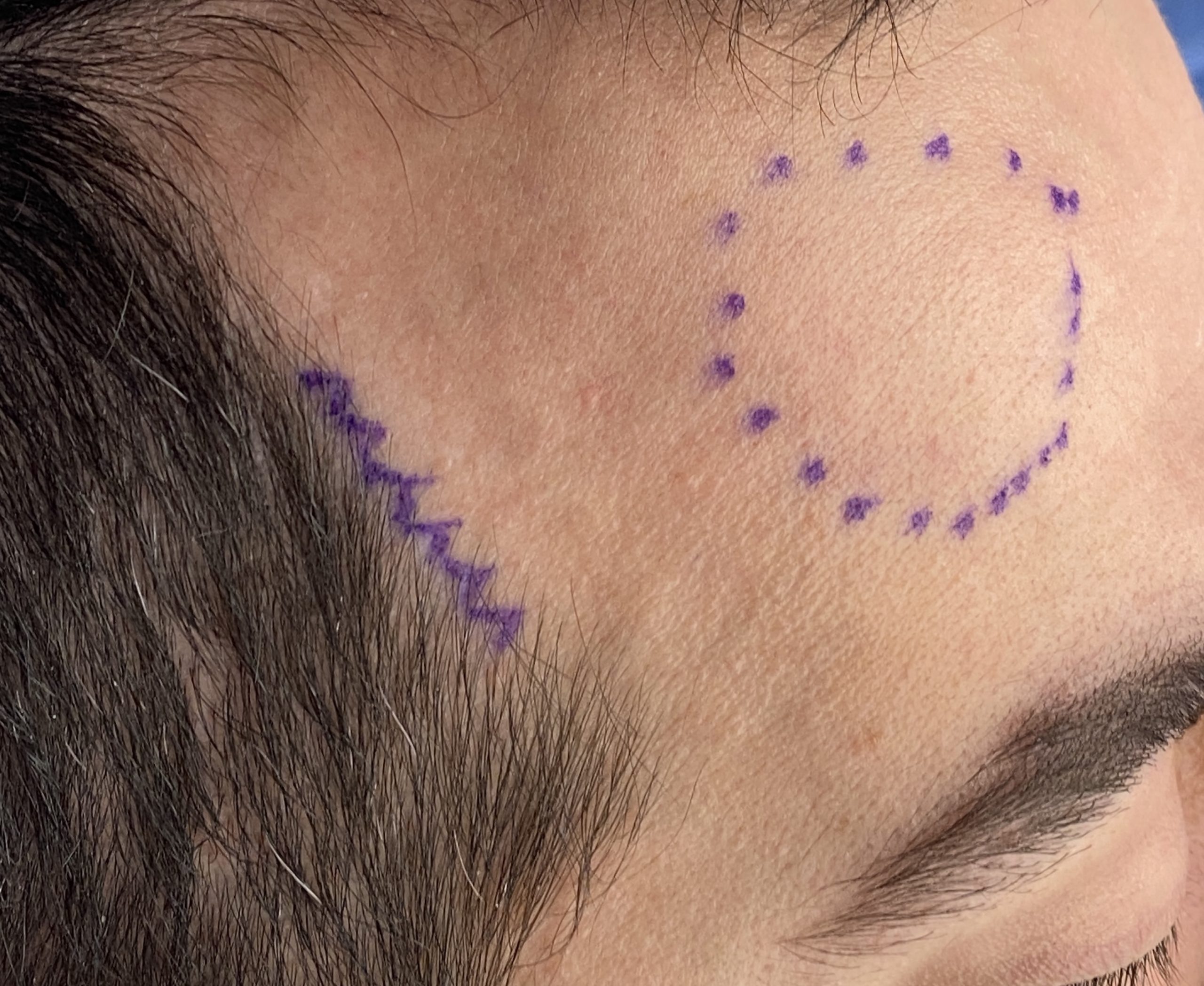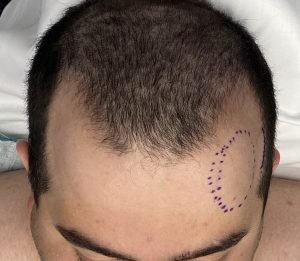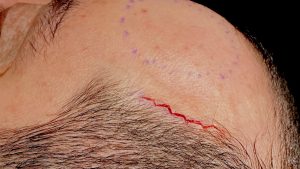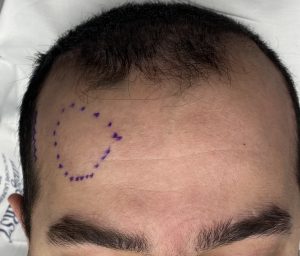Background: There are a variety of aesthetic upper forehead prominences that can benefit from reductive reshaping. While the frontal bone of the skull is not overly thick a certain amount of bone can be removed until the diploid space is encountered. Such prominences as osteomas, forehead horns, frontal bossing and prominent temporal lines represent the most common aesthetic requests.
While high speed burring of the bony prominences is an effective technique for their reductions a key element is surgical access. Where is the incision going to be placed that will allow for an effective reduction but also result in acceptable scarring. This balance between access and hidden scarring is most challenging in males due to the wider variety of frontal hairline shapes and hair densities. While the traditional incisional access to the bony forehead for aesthetic purposes is at or just behind the frontal hairline in some males this may not be a good or viable incisional option. If the hairline is too far behind the forehead-skull transition, if it has a profound V shape or has a thin hair density pattern this may not be a good incisional location.
An alternative hairline location for incisional access to the forehead is the temporal hairline. If lateral access to the forehead prominence can be obtained (from the side) then the only question is how well does this incision location scar?
Case Study: This male had forehead prominences on each side of his forehead that he wanted reduced. The left side was larger than the right. He did not have a good frontal hairline pattern or density that was favorable for incision placement.
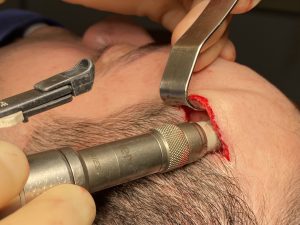
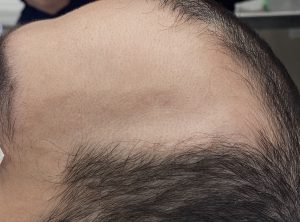
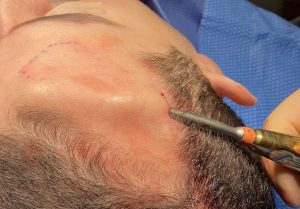
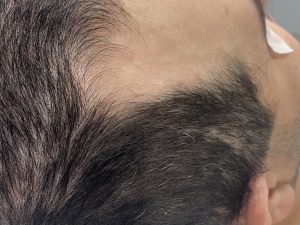
The temporal hairline, while often not the first choice for incisional access to the forehead can produce very favorable scarring.
Case Highlights:
1) The hair pattern in some men may preclude the use of a traditional frontal or retro hairline incision for access to bony forehead surgery.
2) The lateral temporal hairline incision can be used to perform lateral bony forehead reductions. (forehead horns, bony temporal line)
3) The lateral temporal hairline incision heals well with barely any visible scarring.
Dr. Barry Eppley
World-Renowned Plastic Surgeon

